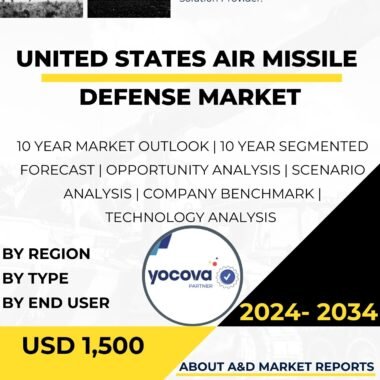Description
United States Anti-Tank & Anti-Personnel Mines Market
The United States anti-tank & anti-personnel mines Market as part of its military strategy. These mines serve as essential tools for fortifying defensive positions and impeding enemy movement in various combat scenarios.
Anti-tank mines are designed to target and disable armored vehicles, including tanks and other armored personnel carriers. These mines are equipped with powerful explosives, capable of penetrating the thick armor of armored vehicles upon detonation. The U.S. military has utilized a range of anti-tank mines, each with specific design features and capabilities to address different tactical requirements.
The M15 Anti-Tank Mine is one of the U.S. military’s traditional anti-tank mines. It is a versatile, bounding-type mine that propels itself into the air before detonating at a predetermined height, effectively increasing its kill radius. The M19 Anti-Tank Mine is another notable example, designed to be buried in the ground and detonated upon contact with the target vehicle. These anti-tank mines have proven effective in impeding enemy armored units and disrupting their offensive advances.
In addition to anti-tank mines, the U.S. military also deploys anti-personnel mines to deter and delay enemy infantry and prevent their movement in certain areas. These mines are specifically designed to engage personnel rather than armored vehicles. The deployment of anti-personnel mines is typically subject to international regulations and humanitarian concerns due to the potential risk they pose to civilians and non-combatants.
The M18A1 Claymore is a widely used anti-personnel mine that fires a spread of steel balls in a forward direction when remotely triggered. This “command-detonated” mine allows operators to direct its lethal force toward specific targets, making it effective in defensive and ambush situations. Additionally, the M14 and M16 Anti-Personnel Mines are bounding fragmentation mines, designed to launch metal fragments upon detonation, inflicting severe injuries to exposed personnel within the blast radius.
To address the humanitarian concerns associated with anti-personnel mines, the United States has taken steps to transition away from persistent landmines that remain active for extended periods after deployment. The military has adopted self-destructing and self-deactivating technologies to minimize the risks posed to civilians and ensure that deployed mines do not remain active indefinitely.
The use of anti-tank and anti-personnel mines remains a controversial subject, and there have been international efforts to regulate and control their use. The United States is a signatory to the 1997 Ottawa Convention, also known as the Mine Ban Treaty, which aims to prohibit the use, stockpiling, production, and transfer of anti-personnel mines. However, the U.S. government maintains that it reserves the right to use anti-personnel mines in the defense of its forces in specific situations, and it has continued to develop non-persistent alternatives and invest in technologies that can increase the safety of these weapons.
In conclusion, the United States has historically employed anti-tank and anti-personnel mines as part of its military strategy to fortify defensive positions and impede enemy movement. These mines play a crucial role in deterring enemy forces and creating obstacles on the battlefield. While the use of anti-personnel mines has become increasingly controversial due to humanitarian concerns, the U.S. military continues to explore alternative technologies and adheres to international regulations to ensure responsible use and minimize the risk to civilians and non-combatants. The deployment of anti-tank and anti-personnel mines remains a carefully considered aspect of the U.S. military’s approach to defensive and offensive operations.




